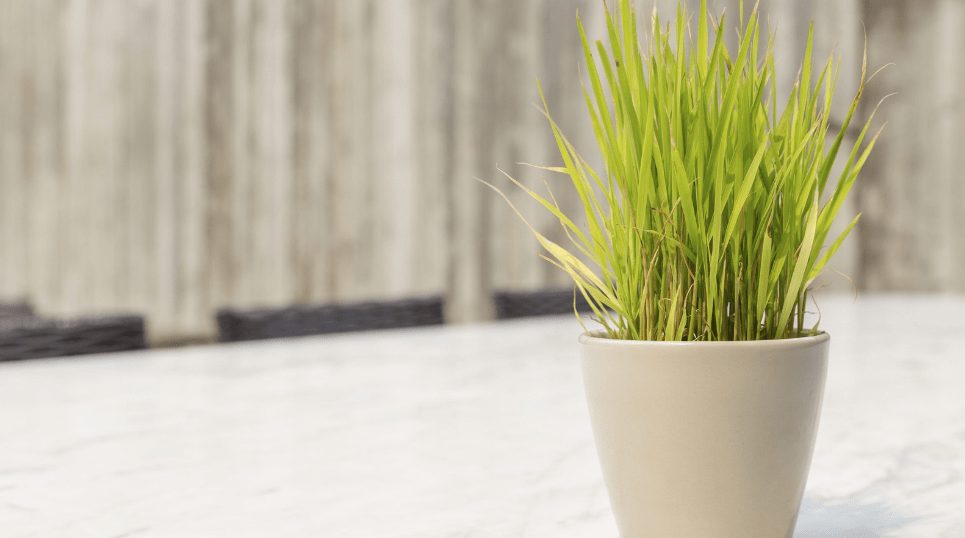
Growing Lemongrass in Pots: Essential Care and Maintenance
Lemongrass is a versatile and aromatic herb that can add a unique flavor to your cooking, as well as provide a natural mosquito repellent for your outdoor space. Growing lemongrass in pots is a great option for those with limited garden space or for those who want to easily move the plant indoors during colder months. In this comprehensive guide, we will walk you through the essential care and maintenance tips to ensure your lemongrass thrives in a pot, whether you’re a beginner or experienced gardener. So, let’s get started on growing lemongrass in pots!
Table of Contents
ToggleGetting Started
1.Choosing the Right Lemongrass Variety
When starting to grow lemongrass in pots, it is essential to choose the right variety for your climate and space. There are several varieties of lemongrass, such as East Indian, West Indian, and Thai, each with its own unique flavor and growth habits. Consider the climate and space you have available when selecting the right variety for your pot.
A.Common varieties suitable for pot cultivation
Common varieties suitable for pot cultivation include West Indian and Thai lemongrass. These varieties are known for their ability to thrive in pots and can easily adapt to different growing conditions. West Indian lemongrass has a sweeter, more mild flavor, making it a popular choice for culinary use. Thai lemongrass, on the other hand, has a stronger, more intense flavor and is often used in Asian cooking.
When choosing a lemongrass variety for pot cultivation, consider the space you have available and the climate in your area. Some varieties may be more suitable for indoor or outdoor growing, so it’s important to select a variety that will thrive in your specific growing conditions.
Once you have selected the right lemongrass variety for your pot, it’s time to move on to the essential care and maintenance tips to ensure your plant thrives. With the right care, you can enjoy a bountiful harvest of fresh lemongrass for all your culinary and aromatic needs.
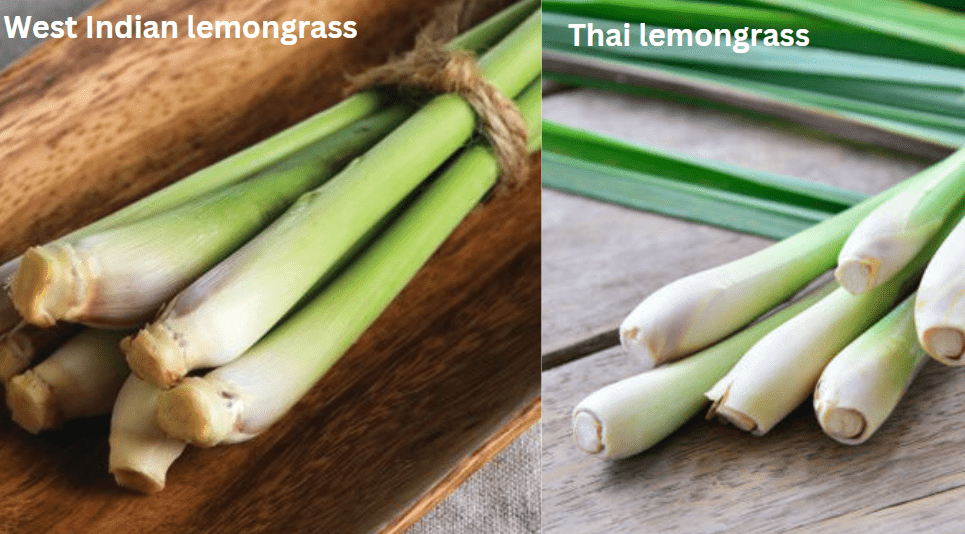
2.Selecting the Right Pot
When selecting a pot for your lemongrass cultivation, it’s important to choose one that is large enough to accommodate the plant’s root system and provide proper drainage. A pot that is at least 12 inches in diameter and 12 inches deep is recommended, as lemongrass has a tendency to spread and grow vigorously. Look for a pot with drainage holes at the bottom to prevent water from pooling and causing root rot. Additionally, consider using a pot with a saucer or tray to catch excess water and prevent a mess. Plastic, ceramic, or terracotta pots are all suitable options for lemongrass cultivation, so choose the material that best suits your personal preference and gardening style. With the right pot, your lemongrass plant will have the room it needs to grow and thrive in a container environment.
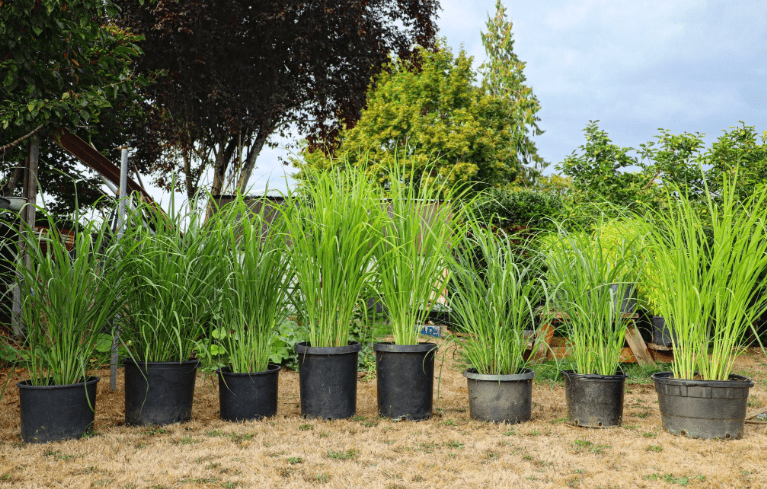
A.Importance of drainage
Proper drainage is essential for the health and growth of your lemongrass plant. Without it, water can pool at the bottom of the pot, leading to root rot and other issues. Choosing a pot with drainage holes and a saucer or tray to catch excess water will help ensure that your lemongrass plant has the right environment to flourish.
3.Soil Requirements
Lemongrass thrives in well-draining soil that is rich in organic matter. A mix of potting soil and compost works well for lemongrass cultivation, providing the nutrients and moisture retention that the plant needs to grow successfully. It is important to ensure that the soil is not waterlogged, as this can lead to root rot and other issues. Additionally, maintaining a slightly acidic to neutral pH level (around 6.0-7.5) in the soil is recommended for optimal lemongrass growth. By providing the right soil conditions, you can support the health and vigor of your lemongrass plant in a container environment.
Planting Lemongrass in Pots
1.Sourcing Lemongrass Plants or Seeds
When sourcing lemongrass plants or seeds for planting in pots, it is important to ensure that you are purchasing from a reputable source. Look for healthy, disease-free plants or high-quality seeds from a trusted nursery or garden center. This will help to ensure that you are starting with strong, viable material that is more likely to thrive in a container environment. Additionally, consider seeking out specific varieties of lemongrass that are well-suited for container gardening, as they may have different growth habits or requirements compared to traditional garden varieties. By starting with healthy, quality plants or seeds, you can set yourself up for success when growing lemongrass in pots.
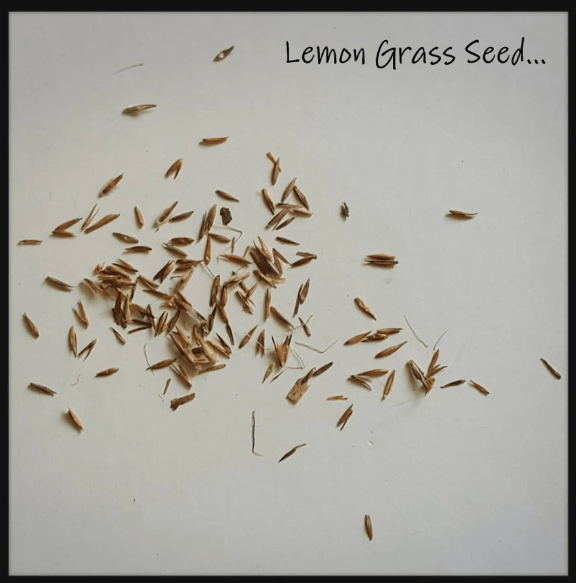
2.Planting Process
The planting process for growing lemongrass in pots begins with selecting a suitable container. Choose a pot that is at least 12 inches in diameter and has drainage holes to prevent waterlogging. Fill the pot with well-draining potting mix, and then plant the lemongrass at the same depth it was previously growing, or about 1 inch below the soil surface. Water the plant thoroughly after planting, and place the pot in a sunny location with at least 6-8 hours of sunlight per day. It’s important to water the lemongrass regularly, but be mindful not to overwater as this can lead to waterlogging. By following these steps, you can successfully plant lemongrass in pots and support its healthy growth.
Essential Care
1.Watering Needs
Lemongrass is a wonderful herb to grow in pots, and with the right care and maintenance, you can ensure a thriving plant. When it comes to watering, it’s important to keep the soil consistently moist but not waterlogged. Lemongrass prefers evenly moist soil, so water it when the top inch of soil feels dry to the touch. Be sure to water the plant at the base to avoid getting the foliage wet, as this can lead to fungal issues. During the hotter months, you may need to water more frequently to account for increased evaporation. It’s always best to water in the morning to allow excess moisture to evaporate during the day and prevent the risk of root rot. By paying attention to your lemongrass’s watering needs, you can ensure a healthy and thriving plant.
2.Light Requirements
Lemongrass thrives in full sun, so it’s important to place your pots in a location where they can receive at least 6-8 hours of direct sunlight each day. If you’re growing lemongrass indoors, place the pots near a south-facing window to ensure they receive adequate sunlight. If you notice that your lemongrass isn’t getting enough light, you can supplement with a grow light to ensure healthy growth. Providing the right amount of sunlight will help your lemongrass plants develop strong, flavorful stalks and support overall plant health.
A.Adjusting light exposure in different seasons
Adjusting light exposure in different seasons may be necessary, as the intensity and duration of sunlight can change. During the winter months, when sunlight may be less intense, you may need to move your lemongrass plants to a sunnier location or provide additional artificial light to ensure they continue to receive the necessary amount of sunlight. Conversely, during the summer months, you may need to protect your lemongrass plants from excessive heat and direct sunlight to prevent sunburn. By monitoring and adjusting the light exposure throughout the year, you can help your lemongrass plants thrive in any season.
3.Fertilizing Lemongrass
Lemongrass plants benefit from regular fertilizing to promote healthy growth and flavorful stalks. Use a balanced, slow-release fertilizer that is rich in nitrogen to provide essential nutrients to the plant. Apply the fertilizer every 6-8 weeks during the growing season, typically from spring to early fall. Be sure to follow the instructions on the fertilizer package for the correct application and dosage for your lemongrass plants. Over-fertilizing can lead to excessive foliage growth at the expense of flavorful stalks, so it’s important to use the right amount of fertilizer. With regular fertilizing, you can support the overall health and vigor of your lemongrass plants.
4.Pruning and Harvesting
A.How to prune lemongrass for health and productivity
Lemongrass plants should be pruned regularly to maintain their health and promote productivity. To prune lemongrass, use sharp scissors or gardening shears to trim off any dead or damaged leaves, as well as any stalks that have become woody or overgrown. Additionally, you can prune the outer leaves and stalks to encourage new growth and maintain the plant’s shape. It’s important to prune lemongrass regularly to prevent the plant from becoming too crowded and to promote the growth of flavorful stalks. By following proper pruning techniques, you can help your lemongrass plants stay healthy and productive.
B.Harvesting techniques for best yield
When harvesting lemongrass, it’s best to wait until the stalks are at least 12 inches tall before cutting them. Use a sharp knife or gardening shears to cut the stalks at the base, leaving about 4-6 inches of the plant behind to allow for regrowth. It’s important to harvest lemongrass regularly to encourage new growth and ensure a continuous supply of flavorful stalks. Store harvested lemongrass in the refrigerator for up to two weeks, or freeze it for longer-term storage. Proper harvesting techniques can help you get the best yield from your lemongrass plants.
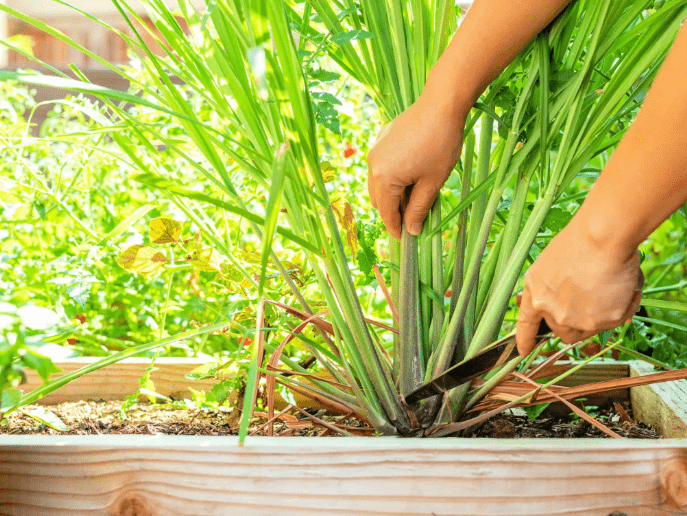
Maintenance Tips
1.Pest and Disease Management
To keep your lemongrass plants healthy, it’s important to regularly check for pests and diseases. Aphids, mites, and scale insects are common pests that can affect lemongrass. Use natural or organic pest control methods, such as neem oil or insecticidal soap, to manage infestations. Keep an eye out for signs of diseases such as rust or leaf spot, and remove any affected leaves or stalks to prevent the spread. Proper watering, good air circulation, and regular pruning can also help prevent pest and disease issues. By staying vigilant and addressing any problems promptly, you can help maintain the health of your lemongrass plants.
A.Organic and chemical treatment options
When it comes to pest and disease management for lemongrass plants, there are both organic and chemical treatment options available. Organic options include using neem oil or insecticidal soap to control pests, as well as removing affected leaves and stalks to prevent the spread of diseases. Chemical treatment options, such as commercial pesticides, are also available for more severe infestations, but it’s important to use them carefully and according to the instructions on the label. It’s always best to start with organic methods and resort to chemical treatments only if necessary. Remember to always wear protective clothing and follow safety guidelines when using any type of pesticide.
2.Overwintering Lemongrass
Lemongrass is a tropical plant that is sensitive to cold temperatures, so overwintering is important in colder climates. You can either bring your lemongrass indoors for the winter or take steps to protect it outdoors. If you choose to bring it indoors, make sure it has plenty of light and water, and keep it away from drafts. If you decide to overwinter it outdoors, you can mulch around the base of the plant to protect the roots from freezing. It’s also a good idea to cut back the foliage and cover the plant with a layer of burlap or a frost blanket to provide extra insulation. By taking these steps, you can help ensure that your lemongrass survives the winter and thrives again in the spring.
3.Repotting Lemongrass
As lemongrass grows, it may become root-bound in its container, so repotting is necessary to allow for continued growth. To repot lemongrass, choose a new container that is one size larger than the current one and fill it with well-draining potting soil. Gently remove the lemongrass from its current pot, being careful not to damage the roots, and place it in the new container. Add additional soil around the plant and water thoroughly. It’s important to choose a pot with drainage holes to prevent waterlogged soil, and to repot in the spring or early summer when the plant is actively growing. Repotting can help refresh the soil and allow for continued healthy growth of the lemongrass plant.
Troubleshooting Common Problems
1.Yellowing Leaves
Yellowing leaves on a lemongrass plant can be a sign of overwatering, nutrient deficiency, or pests. Ensure that the plant is not getting too much water and that the soil is well-draining. Consider fertilizing the plant with a balanced, water-soluble fertilizer to provide the necessary nutrients. Inspect the leaves and stems for signs of pests, such as aphids or mites, and treat as necessary. Removing any yellow or damaged leaves can also help improve the overall health of the plant.
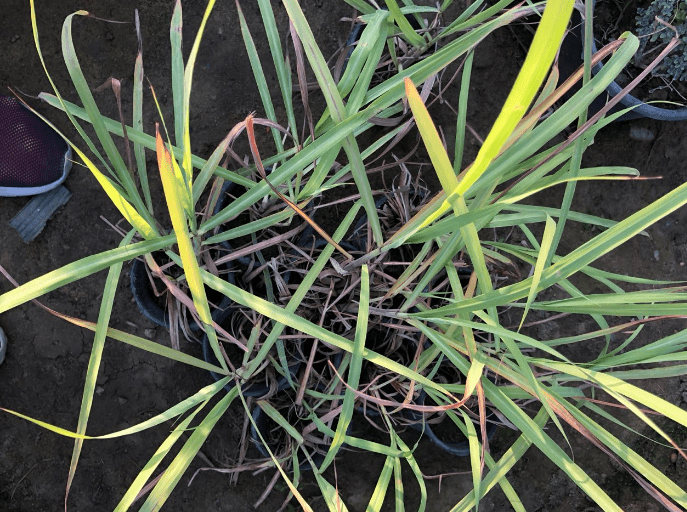
A.Causes and solutions
Yellowing leaves on a lemongrass plant can be caused by overwatering, nutrient deficiency, or pests. To address this issue, it’s important to ensure that the plant is not getting too much water and that the soil is well-draining. Consider fertilizing the plant with a balanced, water-soluble fertilizer to provide the necessary nutrients. Inspect the leaves and stems for signs of pests, such as aphids or mites, and treat as necessary. Removing any yellow or damaged leaves can also help improve the overall health of the plant.
2.Slow Growth
Slow growth of a lemongrass plant can be caused by a few different factors. First, ensure that the plant is getting enough sunlight, as lemongrass thrives in full sun. It’s also important to make sure the plant is getting enough nutrients, so consider fertilizing with a balanced, water-soluble fertilizer. Additionally, check the soil to make sure it’s well-draining and not waterlogged, as this can also stunt the plant’s growth. Finally, consider dividing and repotting the plant if it has become root-bound, as this can help encourage new growth.
3.Root Rot
Root rot in a lemongrass plant is often caused by overwatering or poorly draining soil. To address this issue, it’s important to carefully inspect the roots for signs of decay and remove any affected areas. Repot the plant in well-draining soil and make sure to adjust your watering schedule to prevent waterlogging. Consider using a fungicide to treat the remaining roots and monitor the plant closely for any signs of regrowth. It’s also important to ensure the plant is getting enough sunlight and nutrients to aid in its recovery.
In conclusion, growing lemongrass in pots is a great way to add fresh flavor to your cooking and it’s relatively low-maintenance. By following the tips and techniques outlined in this article, you can ensure that your lemongrass plants thrive and provide you with an abundant supply of fresh herbs. Whether you’re growing them for culinary purposes or simply enjoy the fragrance and beauty of the plant, lemongrass is a wonderful addition to any garden or indoor space.
Frequently Asked Questions (FAQs)
It’s best to use a pot that is at least 12 inches in diameter and has drainage holes at the bottom to allow excess water to escape.
Lemongrass prefers consistently moist soil, so make sure to water it regularly, especially during hot and dry weather.
Use well-draining potting soil mixed with some organic compost to provide the nutrients that lemongrass needs to thrive.
Lemongrass requires at least 6-8 hours of direct sunlight per day, so place your pot in a sunny spot or near a window where it can receive ample sunlight.
Yes, you can fertilize your lemongrass with a balanced fertilizer once a month during the growing season to promote healthy growth.
Lemongrass is sensitive to cold temperatures, so if you live in a colder climate, consider bringing your potted lemongrass indoors during the winter months.
Use a sharp knife or scissors to cut the stalks close to the base when they are about 1/2 inch thick. Trim off any dry or brown leaves before using the stalks.
Yes, you can propagate lemongrass by dividing the root ball and replanting the divisions in separate pots. This will help your lemongrass plant continue to grow and thrive.
